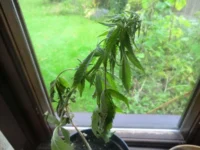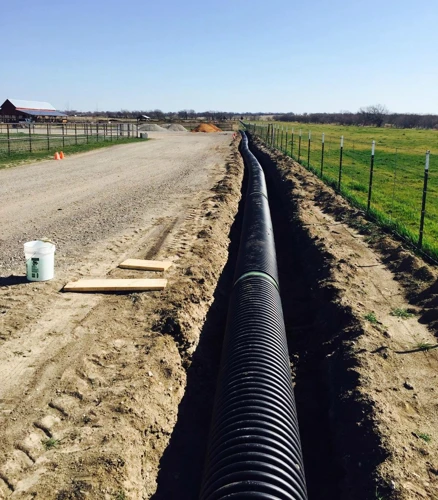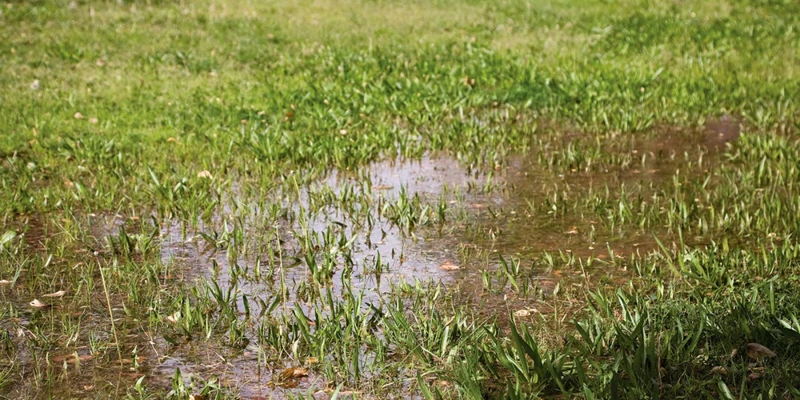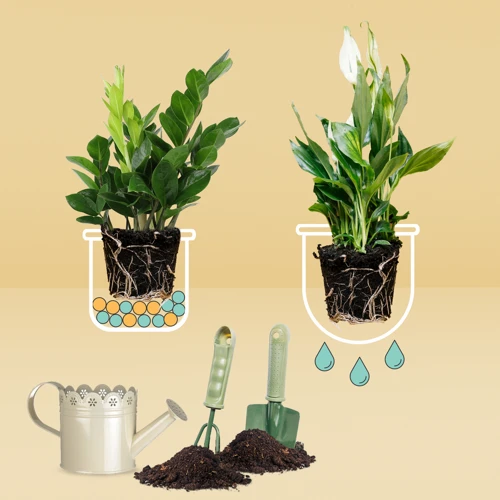
Why Proper Drainage is Critical for Cannabis Growth
Introduction
Contents
Having proper drainage in your cannabis plants is a crucial factor in ensuring their overall health and growth. Without proper drainage, over-watered plants can face a range of serious issues that can inhibit their overall development. In this article, we will explore the importance of proper drainage and how it can help you avoid over-watering your cannabis plants. From the impacts of over-watering to troubleshooting drainage issues, we will cover everything you need to know to keep your plants healthy and thriving. So let’s dive in and discover the crucial role that proper drainage plays in your cannabis plants’ growth and health.
Defining Proper Drainage
Proper drainage is essential for the health and growth of cannabis plants. It refers to the ability of the soil to allow water to flow through it freely, which prevents over-watering and ensures that the roots receive the right amount of moisture.
There are a few different components that make up proper drainage, including soil composition, the presence of drainage holes, and avoiding planting too deeply. In order to determine if your drainage is sufficient, you should consider the following factors:
| Factor | Description |
|---|---|
| Soil Composition | The soil should be well-aerated and free from any clumps or compaction. Adequate amounts of perlite, vermiculite, or sand can be added to improve soil drainage. |
| Drainage Holes | The presence of proper drainage holes at the bottom of the container is crucial to ensure that excess water can flow out and away from the roots. |
| Avoiding Planting Too Deeply | Planting cannabis too deeply can cause moisture to become trapped in the soil and prevent proper oxygen flow to the roots. The plant should be planted at a depth where only the bottom leaves touch the soil. |
Proper drainage is an important factor in growing healthy cannabis plants. By ensuring that your soil is well-aerated, using containers with proper drainage holes, and avoiding planting too deep, you can help prevent over-watering and promote healthy growth.
The Impacts of Over-Watering
When it comes to caring for cannabis plants, watering is a crucial factor to consider. While it is necessary to provide cannabis plants with enough water, over-watering can have severe impacts on their health and growth. As such, it is imperative to understand the adverse effects of over-watering and how it can negatively affect cannabis growth. Over-watering can lead to several issues such as drowning the roots, inhibiting nutrient uptake, and encouraging mold and mildew. In the following sections, we will explore each of these problems in detail to gain a better understanding of why proper drainage is essential for growing healthy and robust cannabis plants.
Drowning the Roots
Over-watering can lead to drowning the roots of cannabis plants, disrupting their ability to absorb the necessary nutrients and oxygen. The following table outlines the causes and effects of drowning roots due to over-watering:
| Cause | Effect |
|---|---|
| Water-logged soil | Reduced oxygen levels in the soil, suffocating the roots and leading to root rot |
| Excessive watering | Poor drainage, causing waterlogged soil and ultimately leading to root rot or death |
| Insufficient drainage holes | Stagnant water at the bottom of the pot, leading to oxygen deprivation and root rot |
It is crucial to prevent over-watering and to ensure that the soil in which the cannabis plant is growing has the appropriate drainage to avoid drowning the roots. By doing so, growers can ensure a healthier and more abundant yield from their cannabis plants.
Inhibiting Nutrient Uptake
Over-watering cannabis can lead to various issues, including inhibiting nutrient uptake. When the soil is constantly wet, the plant’s roots struggle to absorb the required nutrients. This is because over-watering causes the nutrient molecules to become diluted and more difficult for the roots to uptake. It can also cause root rot, which further damages the roots’ ability to absorb nutrients.
Here are some ways over-watering can inhibit nutrient uptake:
- It can lead to a nutrient deficiency or lockout, as the roots are unable to access the necessary minerals and elements due to a lack of oxygen in the soil.
- It can hinder the plants’ ability to photosynthesize, which means the plant cannot produce enough chlorophyll, making it harder for it to uptake nutrients.
- Over-watered soil can increase the pH level, making it more alkaline, which hinders nutrient absorption, especially of essential minerals, such as iron, by the plants.
To avoid inhibiting nutrient uptake due to over-watering, it is essential to ensure that the soil has proper drainage. Proper drainage helps the soil breathe, preventing compaction and allowing air to reach the roots. It also helps to maintain the right amount of moisture in the soil, allowing the roots to access the required nutrients.
Encouraging Mold and Mildew
Over-watering cannabis plants can create a breeding ground for mold and mildew. These fungi thrive in damp, humid conditions, and can quickly take over a plant that is consistently over-watered. Mold and mildew can have detrimental effects on the health and vitality of a cannabis plant, both by inhibiting growth and potentially causing other health problems.
Mold is a type of fungus that can grow on and inside cannabis plants. It appears as a white, gray, or black fuzzy growth, and it can produce spores that are harmful to humans when inhaled. Some types of mold are more dangerous than others, but all mold can have negative effects on plant growth and health.
Mildew is another type of fungus that thrives in humid, damp conditions. It usually appears as a white or gray powdery coating on leaves, stems, and buds. Mildew can cause discoloration and deformation of leaves, resulting in decreased photosynthesis and growth.
To prevent mold and mildew from taking hold in your cannabis plants due to over-watering, it is important to ensure proper drainage. This means using well-draining soil, keeping the soil moist but not soaking wet, and allowing the plant’s roots to dry out between waterings. Additionally, it is important to maintain good air circulation around and within the plant to prevent excess moisture from collecting.
If you do notice mold or mildew growing on your cannabis plant, it is important to take immediate action to prevent further spread. This includes removing any affected plant material and treating the remaining areas with an appropriate fungicide. Keep in mind that certain types of mold and mildew can be harmful to humans, so take appropriate precautions when handling or disposing of affected plants.
How to Ensure Proper Drainage
When it comes to growing cannabis, one of the most important factors to consider is proper drainage. Without it, cannabis plants can quickly become over-watered, leading to a host of negative impacts on their growth and overall health. To ensure that your plants have the drainage they need, there are several key steps you can take. From selecting the right type of soil to understanding how to use drainage holes effectively, these tips will help you provide your plants with the ideal growing environment. Here are some effective ways to ensure your cannabis plants have proper drainage.
Choosing the Right Soil
The type of soil you choose for your cannabis plants can have a significant impact on the drainage of your growing medium. It is essential to select a soil that provides adequate drainage to avoid over-watering your plants and damaging their roots. Here are some factors to consider when choosing the right soil:
| Factor to consider | Description |
|---|---|
| Texture | The texture of the soil plays a crucial role in its drainage capabilities. Sandy soils, for example, drain quickly, while clay soils retain too much water. A loamy soil, which is a mixture of sand, silt, and clay, provides a good balance of drainage and moisture retention. |
| pH | The pH level of the soil affects the availability of nutrients to the plant’s roots. Cannabis plants prefer a slightly acidic soil with a pH of 6.0 to 7.0. Choosing a soil with the right pH level ensures that your plants can absorb the nutrients they need for healthy growth and development. |
| Nutrient content | Some soils are designed specifically for cannabis plants with the right nutrient content. When choosing a soil, consider the stage of plant growth and the specific needs of your plants. Well-nourished plants grow better and are more resilient to drainage issues. |
| Organic matter | A soil with high organic matter content can help improve drainage by preventing soil compaction and promoting good soil structure. A healthy soil structure allows water to flow through easily and provides enough air to the roots for healthy growth. Organic matter can also help retain moisture in the soil, ensuring that your plants have access to water when they need it. |
Taking the time to select the right soil will ensure that your cannabis plants have the best growing conditions possible. Remember that the quality of your soil is directly related to the growth and health of your plants. By selecting a high-quality growing medium with good drainage, you can prevent over-watering and ensure that your plants thrive.
Using Drainage Holes
When it comes to proper drainage, one of the most important factors to consider is ensuring that your cannabis plants have access to adequate drainage holes. These holes are essential for allowing excess water to escape, preventing over-watering and reducing the risk of root rot.
Here are some key steps to follow when using drainage holes:
- Choose containers with drainage holes: When selecting containers for your cannabis plants, it’s important to choose ones that already have drainage holes in the bottom. If your containers don’t have holes, it’s essential to add them to prevent water from becoming trapped at the plant’s roots.
- Ensure appropriate hole placement: The placement of drainage holes is also important for proper drainage. Holes should be located at the bottom of the container to allow water to escape and prevent it from accumulating around the roots.
- Use appropriate container size: It’s important to choose a container that is appropriate for the size of your plant to ensure adequate drainage. A container that is too big for your plant can result in excess water around the roots, leading to over-watering and root rot.
- Elevate containers: Raising containers off the ground can help improve drainage by allowing water to flow away from the container more easily. This can be done by placing containers on top of a saucer or by using pot feet.
By following these steps, you can help ensure that your cannabis plants have access to proper drainage, reducing the risk of over-watering and promoting healthy growth.
Avoiding Planting Too Deeply
When it comes to ensuring proper drainage for cannabis plants, avoiding planting too deeply is an important factor to consider. Planting too deeply can lead to water pooling around the stem, which can cause rot and inhibit proper drainage.
Here are some tips for avoiding planting too deeply:
- Plant at the Right Depth: When planting cannabis plants, it is important to make sure that the top of the root ball is level with the soil surface. Planting too deeply can cause water to pool around the stem, which can lead to rot and poor drainage.
- Loosen the Soil: Before planting, make sure to loosen the soil in the planting area. This will make it easier for water to drain away from the roots and into the soil.
- Dig a Proper Hole: When planting, make sure to dig a hole that is only slightly larger than the root ball. This will help to prevent the plant from sinking too deeply into the soil.
- Add Mulch: Adding mulch around the base of the plant can help to prevent water from pooling around the stem, while also helping to retain moisture in the soil.
By following these tips, you can help to ensure that your cannabis plants have proper drainage and are not at risk of being over-watered. Remember, it is important to always monitor your plants and make adjustments as necessary to ensure their health and vitality.
Troubleshooting Drainage Issues
As a cannabis grower, it’s important to ensure your plants are receiving the right amount of water. Proper drainage plays a crucial role in preventing over-watering, which can have harmful effects on your plants. However, even with the best intentions, drainage issues can still arise. When you encounter problems with your drainage, it’s important to troubleshoot the issue in order to provide your plants with the best environment possible. Let’s delve into some tips for identifying and fixing common drainage issues.
Identifying Poor Drainage
Identifying poor drainage is crucial for maintaining healthy cannabis plants. One of the most obvious signs of poor drainage is waterlogged soil . This may appear as standing water or soil that is constantly moist. To further identify poor drainage, pay attention to the color and texture of the soil. Soil that is poor in drainage tends to have a heavy, compact feel and may appear dense or clay-like in texture.
Another sign of poor drainage is the yellowing and wilting of leaves . An over-watered plant will often exhibit these symptoms as it struggles to uptake nutrients due to the waterlogged soil depriving the roots of oxygen. Additionally, the soil will emit a sour or unpleasant odor . This is due to anaerobic bacteria proliferating in the waterlogged environment.
In extreme cases, poor drainage can lead to root rot and plant death . The roots will appear brown, slimy and emit an unpleasant odor. If left unaddressed, the plant will eventually wilt and die.
It is important to take early action if any signs of poor drainage are detected. This can include adjusting watering practices, improving soil drainage, or repotting the plant with a well-draining soil mix. By taking these steps, growers can ensure the health and longevity of their cannabis plants.
| Signs of Poor Drainage | Possible Causes | Preventative Measures |
|---|---|---|
| Waterlogged soil | Compacted soil, lack of drainage holes | Choose well-draining soil, ensure proper drainage holes in pots or containers |
| Yellowing and wilting of leaves | Over-watering, waterlogged soil inhibiting nutrient uptake | Adjust watering practices, improve soil drainage |
| Sour or unpleasant odor | Anaerobic bacteria in waterlogged soil | Improve soil drainage, adjust watering practices |
| Root rot and plant death | Prolonged waterlogging, lack of oxygen for roots | Repot with well-draining soil, adjust watering practices |
Fixing Soil Compaction
Soil compaction is a common issue that can exacerbate poor drainage and cause over-watering. This occurs when soil particles are pressed together, reducing the amount of space between them, and making it difficult for water to pass through. Fortunately, there are several steps you can take to fix soil compaction and improve drainage.
1. Loosen the soil: One way to fix soil compaction is to loosen the soil with a garden fork or aerator tool. This process breaks up the compacted soil, allowing water to penetrate more easily.
2. Add organic matter: Another way to improve soil compaction is by adding organic matter such as compost or leaf mold. These materials help to improve soil structure and increase the amount of space between soil particles.
3. Use cover crops: Cover crops such as clover or vetch can also help to fix soil compaction. These plants have deep roots that penetrate into the soil, breaking up compaction and improving drainage.
4. Avoid walking on soil: Walking on soil can cause compaction, so it’s important to avoid walking on areas where plants are growing. Consider creating designated pathways or using stepping stones to avoid compacting the soil.
5. Implement raised beds: Raised beds are an effective way to avoid soil compaction because they provide increased drainage and aeration. This is particularly beneficial for cannabis cultivation because it allows for precise control over soil quality and moisture levels.
By taking these steps to fix soil compaction, you can improve drainage and prevent over-watering in your cannabis garden. Remember that healthy soil is the foundation for healthy plants, so it’s worth taking the time to properly address soil compaction issues.
Adjusting Watering Practices
To avoid over-watering, it’s essential to adjust your watering practices. The frequency, amount, and timing of watering can impact your cannabis plants’ growth and health. Here’s a breakdown of how to adjust watering practices to ensure proper drainage.
Frequency: Over-watering often stems from watering too frequently. It’s essential to allow the soil to dry out between watering, ensuring that the roots have access to both air and water. How often you water depends on the soil type, humidity, light, and temperature of your growing environment. A general rule is to wait until the top layer of soil feels dry before watering again.
Amount: The amount of water you give your cannabis plant depends on the size of the pot, the stage of growth, and the environment. Over-watering occurs when you give too much water, drowning the roots, and limiting nutrient uptake. A good way to check if you’re over-watering is to lift the pot; if it feels heavy, it’s likely holding too much water.
Timing: Depending on the stage of growth, the timing of watering can impact the performance and size of your cannabis plant. During the vegetative stage, cannabis plants need more water as they are in rapid growth mode. During the flowering stage, the plants require less water as the nutrient uptake is slower. It’s also recommended to water your plants in the morning, allowing any excess water on the leaves to dry out during the day, preventing mold and mildew.
Adjusting watering practices can ensure proper drainage and prevent over-watering of your cannabis plants. Monitoring the frequency, amount, and timing of watering can significantly impact the growth and health of your plants. By being attentive and adjusting watering practices as needed, you can promote healthy, thriving cannabis plants.
| Frequency | Amount | Timing |
|---|---|---|
| Allow soil to dry out between watering | Give the right amount of water for the pot size and growth stage | Water in the morning, allowing leaves to dry during the day |
| Monitor soil for dryness | Check weight of pot to ensure not too heavy | Water more during vegetative stage, less during the flowering stage |
| Avoid watering too frequently | Limit watering during humid conditions | Avoid watering at night to prevent mold and mildew |
Conclusion
As we wrap up our discussion on the importance of proper drainage for cannabis plants, it is paramount to emphasize the gravity of this topic. Ensuring that your cannabis plants are not over-watered is crucial for their growth and overall health. By implementing the tips and techniques we have discussed, you can avoid the negative impacts of over-watering cannabis and provide your plants with the optimal conditions for growth. Remember, your plants rely on you to create the ideal environment for their success. So, take the time to ensure proper drainage, and watch as your cannabis plants flourish.
Final Thoughts
As we wrap up this article on the importance of proper drainage for cannabis plants, it’s important to note that maintaining the right balance of water is crucial for the health and growth of your plants. Over-watering can lead to a host of problems, but with the right techniques, you can prevent such issues.
By choosing the right soil, using drainage holes, and avoiding planting too deeply, you can ensure your cannabis plants have the proper drainage they need. However, if you do encounter issues with poor drainage, there are ways to troubleshoot and fix the problem.
Ultimately, proper drainage is one of the key factors in achieving a successful cannabis harvest. By taking the time to understand the importance of proper drainage and implementing the right techniques, you can ensure your plants have the best chance at thriving. Remember to monitor your plants regularly and adjust your watering practices as needed to maintain optimal growing conditions.
Frequently Asked Questions
What is the ideal pH level for cannabis plants?
The ideal pH level for cannabis plants is between 6.0 and 7.0 to ensure proper nutrient uptake.
What is soil compaction, and how does it affect drainage?
Soil compaction is when soil particles become too densely packed, restricting water flow and air circulation. This can lead to poor drainage and decreased plant growth.
How often should I water my cannabis plants?
It depends on various factors, such as the size of the plant and the environmental conditions. Generally, cannabis plants in well-draining soil should be watered every 2-3 days.
What are some common signs of over-watering?
Yellowing leaves, wilting, and mold/mildew growth are common signs of over-watering in cannabis plants.
What kind of pot should I use for my cannabis plant?
It’s important to use a pot with drainage holes to ensure proper drainage. Fabric pots are a popular option for their breathability and ability to wick away excess moisture.
Can I reuse soil from a previous cannabis grow?
Yes, but it’s important to properly amend the soil with additional nutrients to ensure it has the proper pH balance and nutrient levels for your plants.
What are some common causes of poor drainage in cannabis plants?
Poor soil quality, lack of drainage holes, and planting too deeply can all contribute to poor drainage in cannabis plants.
What are some signs that my cannabis plant is suffering from nutrient deficiencies?
Yellowing or browning leaves, stunted growth, and reduced yield are common signs of nutrient deficiencies in cannabis plants.
Is it possible to over-fertilize my cannabis plants?
Yes, over-fertilization can lead to nutrient burn and other issues in cannabis plants. It’s important to follow the recommended dosage and frequency on fertilizer labels.
Can I grow cannabis outdoors without proper drainage?
While it’s possible, it’s not recommended as it can lead to a variety of issues including root rot, mold/mildew growth, and stunted plant growth.





